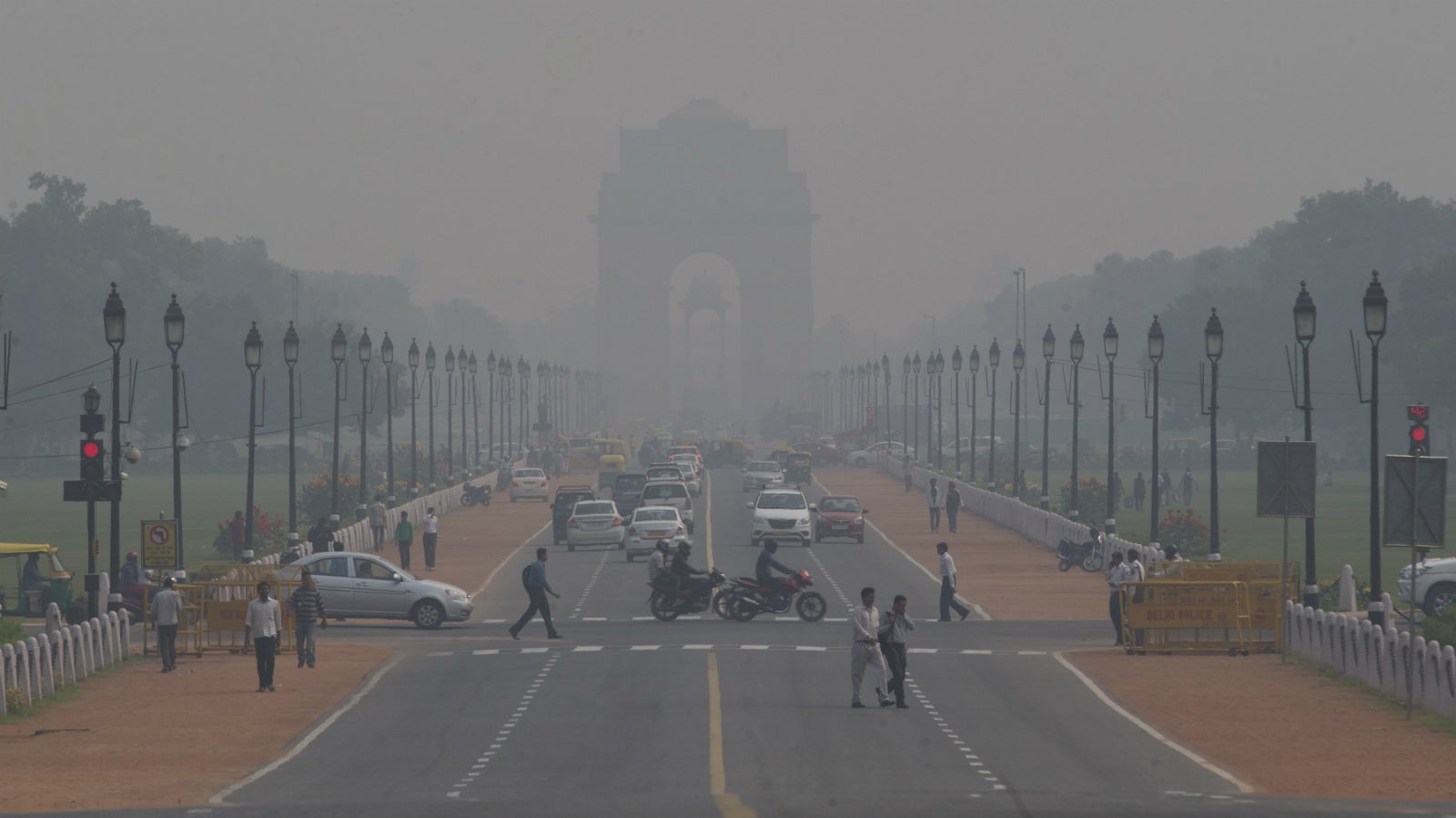India will spend $3 billion to clean up one of the world’s most polluted cities
India is gearing up to shell out Rs19,762 crore ($2.95 billion) to bring down traffic congestion in its capital city.


India is gearing up to shell out Rs19,762 crore ($2.95 billion) to bring down traffic congestion in its capital city.
New Delhi, home to some 16 million people, is currently the world’s 11th-most polluted city. Two years ago, it was the world’s most polluted. The toxic air here kills about 30,000 people annually. The particulate PM2.5—tiny particles or droplets in the air—in Delhi’s air is over 13 times more than the World Health Organization’s annual recommendation.
Some of this pollution is attributed to the over 8.8 million vehicles in the city.
To bring down vehicular pollution, the Delhi government even experimented with car rationing twice this year.
Now, a committee set up by India’s urban development ministry has proposed a number of measures to curb traffic congestion in the city. The Narendra Modi government had set up the committee in Nov. 2014.
The proposal awaits the central government’s nod.
“The explosive growth in automobile population needs to be checked quickly by adopting a carrot-and-stick policy of enabling increased use of public and non-motorised transport and dis-incentivising use of private vehicles through deterrent parking prices and congestion tax,” a spokesperson for India’s urban ministry said.
The committee’s report said that about 60% of passenger trips in New Delhi cover less than four kilometres, while 80% cover less than six kilometres. It proposes to increase the use of public transport and non-motorised travel, making them account for 80% of the total passenger trips. By 2021, New Delhi is expected to have over 28 million daily passenger trips, the study noted.
Here is a list of other major proposals made by the committee.
- Parking on footpaths to be made an offence.
- Footpaths on all roads, with right of first use of street space to pedestrians
- Provision of more crossings for pedestrians and cyclists, at least at every 250 metres
- Access to bus service should be within walking distance from home or office
- Bus fares to be priced less than the per kilometre cost of running a two-wheeler
- 2,000 new buses to be procured immediately and 4,000 in the next phase
- Development of Bus Rapid Transit System corridors on high-density routes
- Market-driven parking fees and congestion tax to discourage use of private vehicles
- Setting up a unified metropolitan transport authority to fast-track decisions